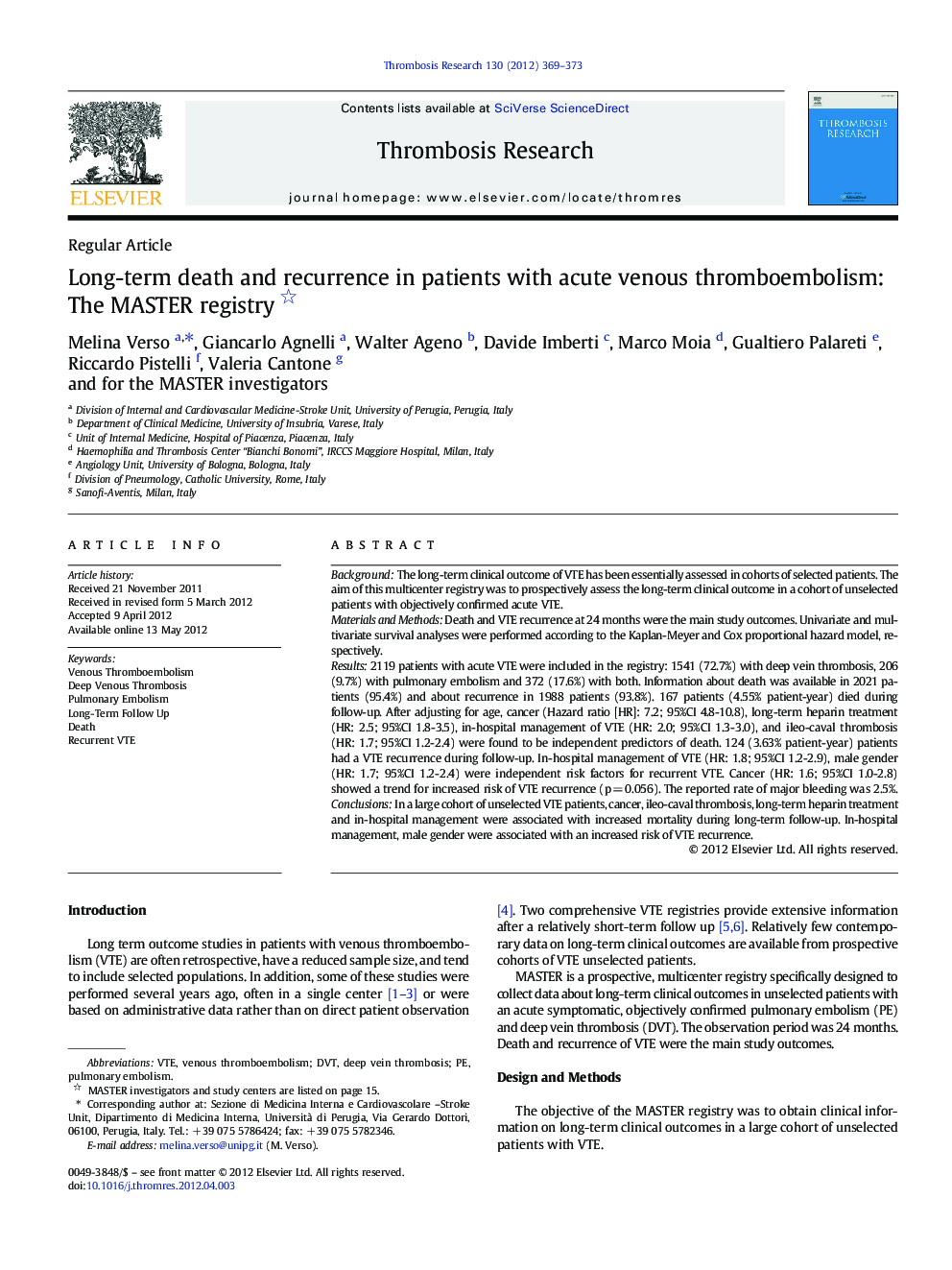| Article ID | Journal | Published Year | Pages | File Type |
|---|---|---|---|---|
| 3028263 | Thrombosis Research | 2012 | 5 Pages |
BackgroundThe long-term clinical outcome of VTE has been essentially assessed in cohorts of selected patients. The aim of this multicenter registry was to prospectively assess the long-term clinical outcome in a cohort of unselected patients with objectively confirmed acute VTE.Materials and MethodsDeath and VTE recurrence at 24 months were the main study outcomes. Univariate and multivariate survival analyses were performed according to the Kaplan-Meyer and Cox proportional hazard model, respectively.Results2119 patients with acute VTE were included in the registry: 1541 (72.7%) with deep vein thrombosis, 206 (9.7%) with pulmonary embolism and 372 (17.6%) with both. Information about death was available in 2021 patients (95.4%) and about recurrence in 1988 patients (93.8%). 167 patients (4.55% patient-year) died during follow-up. After adjusting for age, cancer (Hazard ratio [HR]: 7.2; 95%CI 4.8-10.8), long-term heparin treatment (HR: 2.5; 95%CI 1.8-3.5), in-hospital management of VTE (HR: 2.0; 95%CI 1.3-3.0), and ileo-caval thrombosis (HR: 1.7; 95%CI 1.2-2.4) were found to be independent predictors of death. 124 (3.63% patient-year) patients had a VTE recurrence during follow-up. In-hospital management of VTE (HR: 1.8; 95%CI 1.2-2.9), male gender (HR: 1.7; 95%CI 1.2-2.4) were independent risk factors for recurrent VTE. Cancer (HR: 1.6; 95%CI 1.0-2.8) showed a trend for increased risk of VTE recurrence (p = 0.056). The reported rate of major bleeding was 2.5%.ConclusionsIn a large cohort of unselected VTE patients, cancer, ileo-caval thrombosis, long-term heparin treatment and in-hospital management were associated with increased mortality during long-term follow-up. In-hospital management, male gender were associated with an increased risk of VTE recurrence.
